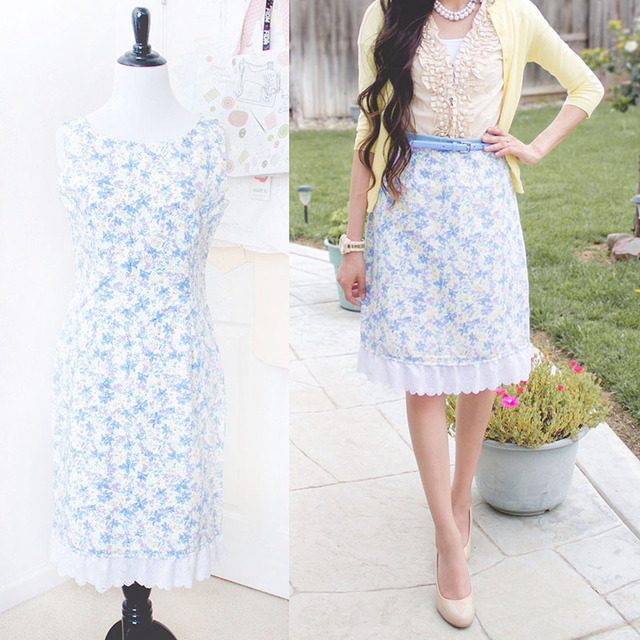Transforming an old dress into a stylish skirt is an excellent way to recycle and give new life to clothing you no longer wear. Whether the dress is out of style, too short, or you simply want to create a fresh look, this DIY project is both fun and practical. Therefore, this article provides a step-by-step guide on how to make a dress into a skirt, covering necessary materials, cutting and hemming techniques, and additional styling tips.
Do you have a dress in your closet that you don’t wear anymore? Maybe it’s outdated or doesn’t quite fit the way you like. Instead of tossing it out, consider giving it a new lease on life by transforming it into a skirt! This is a fun and sustainable way to update your wardrobe and create a unique piece.
How to make a dress into a skirt? This article will guide you through the process of turning a dress into a skirt, step-by-step. We’ll cover different techniques for various dress styles, so you can find the perfect approach for your project.

Gathering Your Supplies
How to turn a dress into a skirt? Before you dive into transforming your dress, collect the tools you’ll need:
- Sharp fabric scissors or rotary cutter
- Measuring tape
- Sewing pins
- Sewing machine (or needle and thread for a hand-stitched finish)
- Matching thread (or thread that blends well with your dress fabric)
- Ruler (optional)
- Fabric marker (optional)
Depending on your chosen transformation method, you might also need additional materials like elastic waistband, ribbon, or bias tape.
Washing and Ironing Your Dress
It’s always a good idea to wash and iron your dress before you begin altering it. This removes any wrinkles or dirt and ensures you’re working with clean fabric. Follow the care instructions on the dress label for washing and ironing.
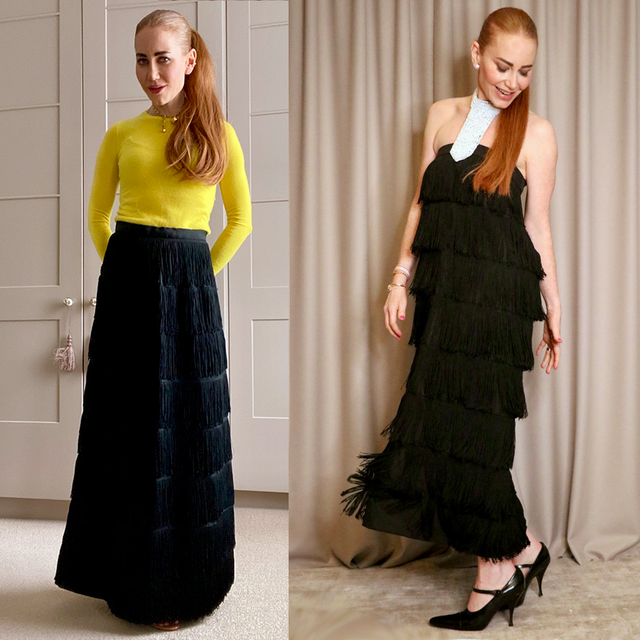
Choosing Your Transformation Technique
The best way to making a dress into a skirt depends on the style of the dress. Here are some common approaches:
Simple Straight Cut:
This is a great option for dresses with a straight or slightly A-line silhouette. Measure the desired length for your skirt and cut the dress fabric horizontally at that point. You can then hem the raw edge to create a finished look.
Empire Waist Cut:
If your dress has an empire waist (high waistline), you can cinch the fabric just below the empire seam to create a cute and flowy skirt. This method works well with dresses that have a gathered or flowy skirt portion.
Deconstruct and Reconstruct:
For more intricate dress styles, you might consider deconstructing the bodice and reconstructing it as a waistband for your skirt. This approach requires more sewing skills but can be a great way to salvage unique fabric or details from the dress.
Tips for Choosing Your Cutting Line
- Consider the overall proportions of the skirt. You want the finished skirt to flatter your figure.
- Think about how the drape of the fabric will change once turning dress into skirt. Will it become more gathered or flowy?
- If you’re unsure about the cutting line, start with a longer length and gradually trim it shorter until you reach the desired length. It’s always easier to remove fabric than to add it back.
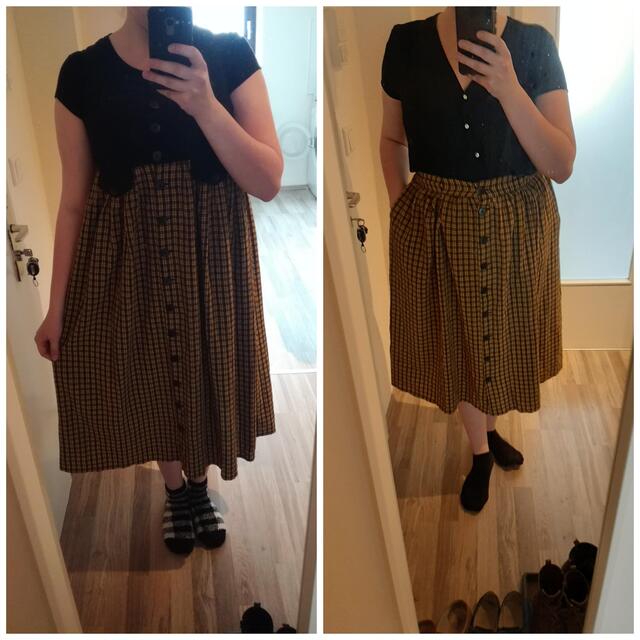
Creating a Finished Hem
Once you’ve cut your dress to the desired length, you’ll need to hem the raw edge to prevent fraying. Here are two common methods for hemming:
-
Double Fold Hem: This is a simple and sturdy hem suitable for most fabrics. Fold the raw edge of the fabric twice towards the inside and iron each fold in place. Then, sew the hem close to the second fold.
-
Serged Hem: If your fabric frays easily, you can use a serger machine to create a clean and finished hem. A serger cuts, trims, and encases the raw edge of the fabric in one step.
Adding a Waistband (Optional)
Depending on the style of your dress and your desired outcome, you can add a waistband to your skirt. Here are a few options:
-
Elastic Waistband: This is a comfortable and easy option that creates a stretchy waistband. You can use pre-made elastic with various widths and colors.
-
Fabric Waistband: Cut a strip of fabric from the leftover dress material or use coordinating fabric to create a more structured waistband. You can add closures like buttons or hooks and eyes.
-
Ribbon Waistband: A ribbon waistband can add a touch of femininity and style to your skirt. Choose a ribbon width that complements the overall look of the skirt.
Finishing Touches and Embellishments (Optional)
With the basic transformation complete, you can personalize your skirt further by adding your own creative touch. Here are some ideas:
- Embellishments: Add buttons, beads, or lace to create a unique design on your skirt.
- Pockets: If your dress has pockets you like, you can carefully remove them and attach them to your new skirt.
- Belts: Cinch your skirt with a belt to add another layer
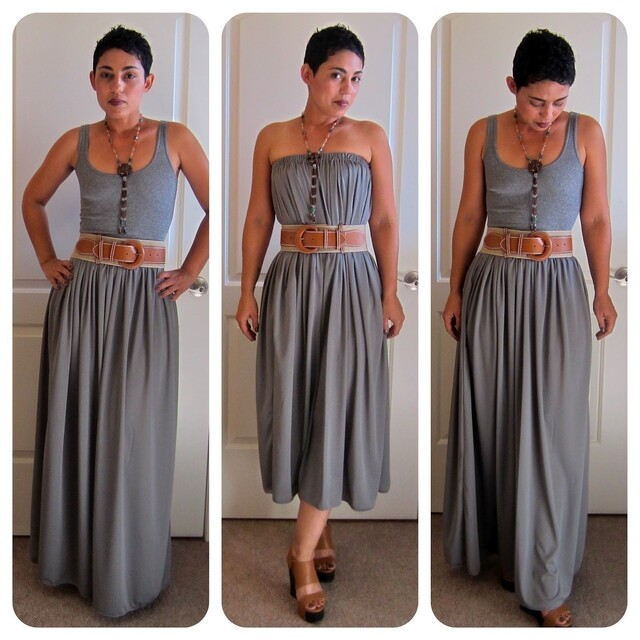
Safety Tips and Considerations
-
Sharp tools like scissors and rotary cutters can cause injuries. Be careful when handling them and always cut away from yourself.
-
When using a sewing machine, keep your fingers away from the needle to avoid getting pricked.
- If you’re new to sewing machines, it’s a good idea to practice on scrap fabric before working on your dress. There are many online tutorials that can teach you the basics of sewing machine operation.
-
You can also choose to hand-sew your skirt if you don’t have access to a sewing machine or aren’t comfortable using one.
Socking Your New Skirt!
Congratulations! You’ve successfully transformed your dress into a stylish skirt. Now you can enjoy wearing a one-of-a-kind piece in your wardrobe.
Here are some additional tips:
- Pair your new skirt with different tops: A versatile skirt can be dressed up or down depending on the occasion. Try pairing it with a blouse for a more formal look or a t-shirt for a casual look.
- Accessorize!: Add a belt, scarf, or statement necklace to personalize your outfit and add a touch of your style.
Transforming clothes is a great way to be sustainable and express your creativity. Don’t be afraid to experiment and have fun with the process! You might be surprised at the unique pieces you can create by giving old clothes a new lease on life.
Beyond the Basics: Inspiration and Resources
The world of clothing transformation is vast and exciting! Here are some resources to inspire you and help you expand your skills:
-
Online Tutorials: There are countless online tutorials that offer step-by-step guides for transforming clothes. Search for tutorials based on the specific style of dress you want to alter.
-
Thrifting Inspiration: Thrift stores are treasure troves for finding unique clothing items that can be transformed into something new. Browse the aisles for dresses with interesting fabrics, details, or silhouettes that inspire you.
-
Sustainable Fashion Blogs: Many blogs and websites focus on sustainable fashion practices, including clothing upcycling and refashioning. These resources can provide valuable tips and inspiration for your next project.
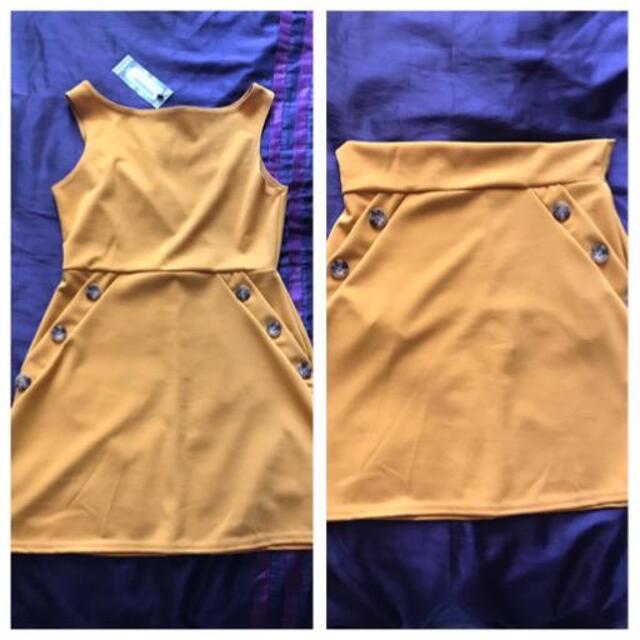
Styling Your New Skirt
Having successfully transformed your dress into a skirt, styling it offers various possibilities. Therefore, exploring styling tips enhances your wardrobe options.
Casual Styling
For a casual look, pair your new skirt with a simple t-shirt or tank top. Add some comfortable sneakers or flats and a denim jacket. This combination offers a laid-back yet stylish appearance suitable for everyday wear. Incorporate accessories like a crossbody bag or statement earrings to elevate the look further. Therefore, recognizing casual styling options ensures versatility in your wardrobe.
Formal Styling
For a more formal occasion, pair the skirt with a blouse or a tailored shirt. High heels or classy flats complement this look well. Adding a blazer or a chic cardigan can elevate the ensemble, making it suitable for work or a semi-formal event. Choose accessories like a sophisticated handbag and subtle jewelry to complete the outfit. Therefore, understanding formal styling options allows for diverse and elegant looks.
Conclusion
Understanding how to make a dress into a skirt involves several steps, from gathering materials to final adjustments. Proper knowledge of these aspects ensures a successful transformation.
Exploring elements like materials needed, measuring and cutting, waistband preparation, and finishing touches provides valuable insights. Recognizing the importance of proper measurement, accurate cutting, and secure waistband attachment further enhances your understanding.
By engaging in these steps, you can effectively repurpose an old dress into a stylish and functional skirt. Therefore, whether for casual or formal occasions, understanding these techniques offers practical and valuable insights. Embrace the opportunity to expand your wardrobe creatively, knowing you have the knowledge and resources to make a fashionable skirt from an old dress in 2024!
